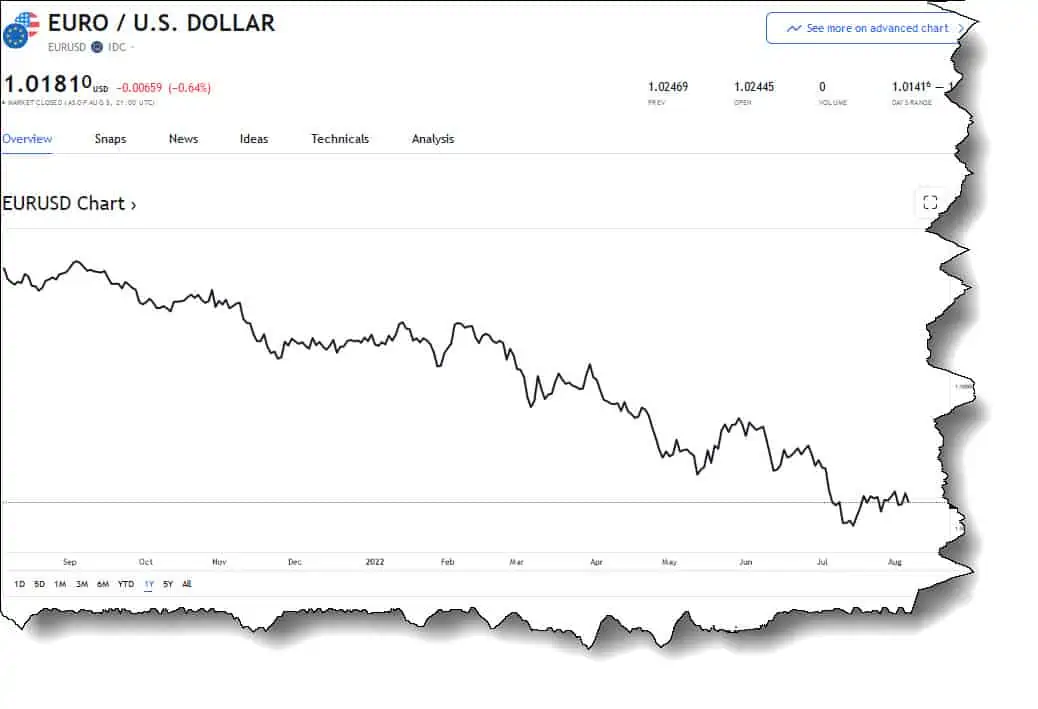How to start your own supplement brand (Free guide)
If you have ever thought about starting your own supplement brand, you are at the right place! That ‘s because […]
Read More »Become a successful marketing consultant: Learn more

If you have not been exposed to the Eurodollar yet (not to be confused with the Euro), you are in for an eye-opener!
That’s because in this article, we are going to address what the Eurodollar is, how it started and why it is the largest financial market in the world, by far.
Why is the Eurodollar market important?
The Eurodollar market is important because it is the largest financial market in the world, with some estimates as high as $350 trillion. The Eurodollar is a source of capital for governments, financial markets, for boosting international trade and providing flexibility for investors and borrowers.
Since the 1960s, the Eurodollar has served as one of the most important sources of foreign currency in the European market.
It allows countries, like many in the collective West, to finance their imports using the United States dollar (USD).
Let’s now explore some of the reasons why the Eurodollar is so important to financial markets worldwide. And why this may be a factor to consider as you market your business internationally.
The Eurodollar, roughly translated, means the U.S. main denomination in Europe. The term refers to U.S. dollars in bank accounts outside the United States, specifically time deposit accounts in financial institutions.
The money is, therefore, outside the country, and the U.S. Federal Reserve has little or no control over the deposits.
The eurodollar is important because:
The term Eurodollar was initially used to refer to USD accounts opened in European banks. However, it has now expanded to encompass U.S. dollar time deposits held by financial institutions across the globe. For instance, if a citizen makes a dollar deposit in Tokyo, it will still be referred to as a Eurodollar deposit.
The Eurodollar is subject to the economic risks of the country or region that hosts that bank. Fortunately, most of these banks are in secure and stable locations to counter that risk.
The Eurodollar is the main source of funding for primary international capital markets. Its value relies upon the rates the Fed Reserve sets for dollars inside the United States.
For the Eurodollar market to maintain liquidity, it must get a constant supply of deposits. The currency is transferred between banks using the CHIPS or the Fed wire system.
The prefix euro appears in both names, but this should not confuse you.
A euro and a Eurodollar are two different currencies or denominations. The euro is native to Europe. While the dollar is native to the United States, the Eurodollar signifies US dollars deposited outside of the United States.
The euro, represented by the € sign and coded as EUR, is the official currency of the European Union and 13 select states outside the E.U.
It was first introduced as an accounting currency to replace European Currency Units in 1999. The actual banknotes and coins began circulating publicly in 2002, and the euro was finally adopted as a reserve currency.
On the contrary, the Eurodollar is the U.S. denomination held in a foreign account. The Eurodollar appeared much earlier than the euro dating back to the 1950s and 1960s. It is primarily a reserve currency used in risky international lending situations. The term can also refer to the U.S. currency held by branches of U.S. banks outside the country.
In summary:
The Eurodollar was not an intentional creation but was born out of circumstances.
The Eurodollar came to the limelight in the 1960s. However, the practice of depositing U.S. dollars in foreign accounts had started as early as the 1930s. The deposits and transactions grew in number in later years.
The European economy collapsed after the second world war.
In a bid to create stability, the United States pumped dollars into the European economy through the Marshall Plan to try and create stability. When the economy finally stabilized, people refused to return the money through U.S. banks.
The banks, in return, would lend the denominations to risky markets at high exchange rates. This is how the Eurodollar came to be.
In essence, the Eurodollar was created to evade subsidies, taxes, and other dollar regulations by the U.S. Federal Reserve.
Eurodollar and LIBOR are two different concepts.
A Eurodollar is a time deposit account. You just deposit dollars in a bank outside the U.S. and let them accumulate interest until maturity. Eurodollars are not under the jurisdiction of the federal banking system.
Most Eurodollar transactions occur between large financial institutions or countries. When a country makes a Eurodollar deposit, the receiving bank also gets a deposit with a U.S. bank. The bank then uses the receiving balance to loan dollars to other customers.
A LIBOR is not a currency but an interest rate standard. LIBOR is short for London Interbank Offered Rate. It reflects the average rates certain panel banks should be charged to access unsecured funding. It is often an average rate of at least five currencies.
Lenders use the LIBOR benchmark to determine the interest rates to charge on various financial products.
While the default use of LIBOR is currently changing, LIBOR indicates how much a major bank (this decision is made in London, England) would charge another for lending them funds anywhere between 12 hours and 12 months.
This is then used to determine interest charged on loan products such as mortgages, student loans, business loans and funds for marketing campaigns.